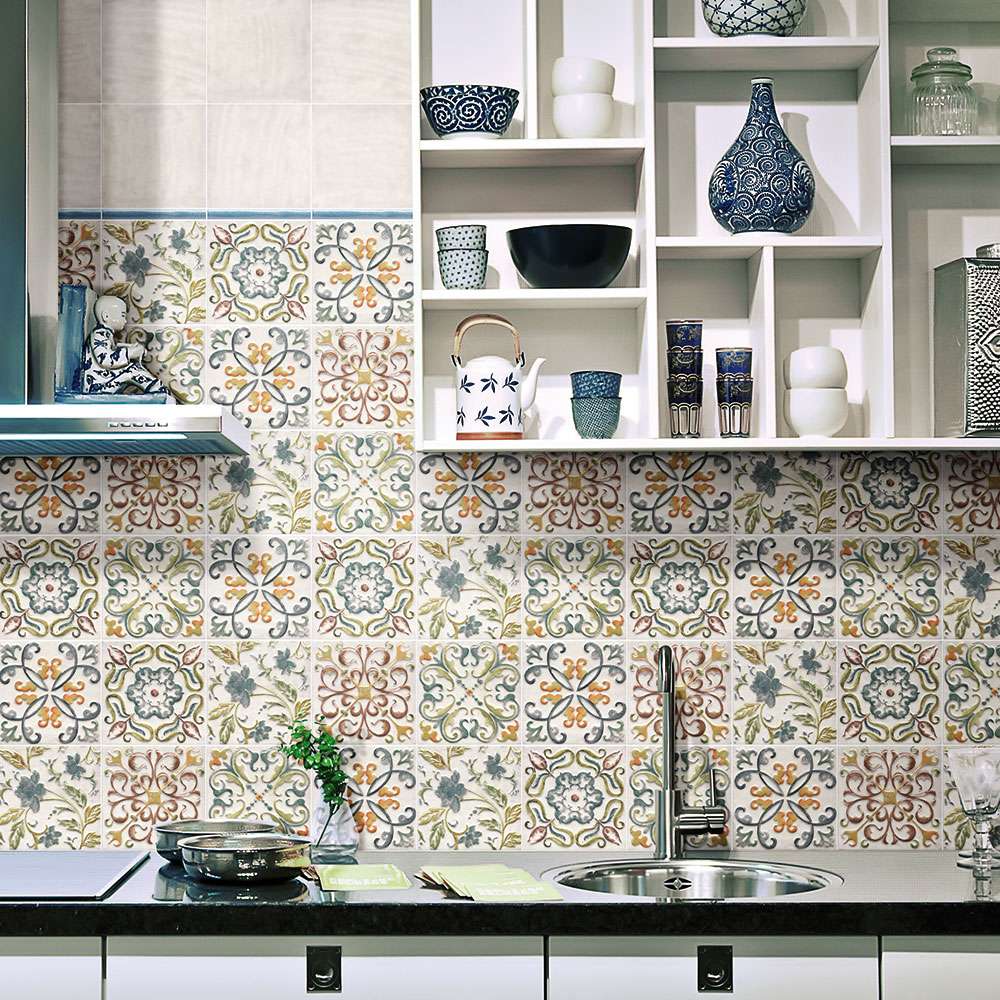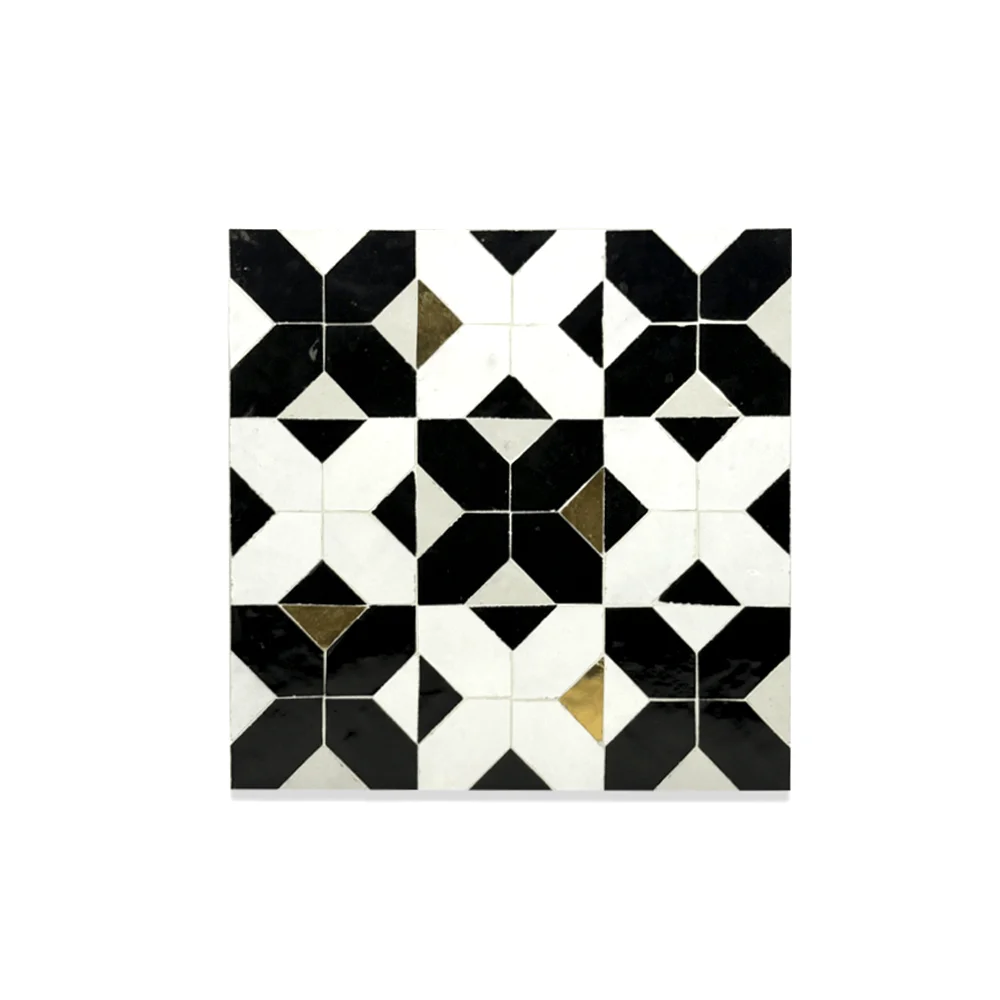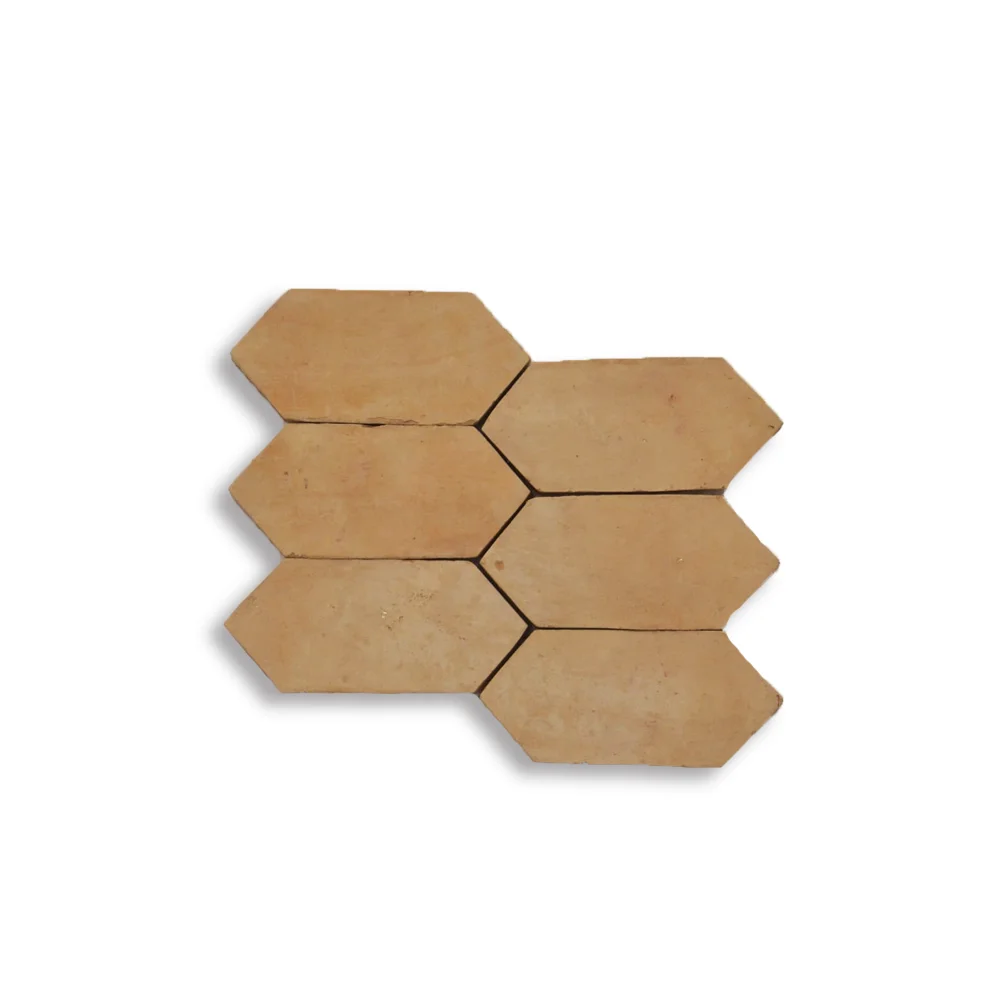How to Mix Moroccan Tiles with Modern and Minimalist Interiors

A Journey of Contrast and Craft
In a quiet, white-walled apartment in Brooklyn, Leila stared at her newly renovated living room. Clean lines, neutral tones, airy space—it was everything a minimalist design should be. But something was missing. “It needs a soul,” she whispered. That soul came in the form of a single Panel Zellij tile artwork, installed above the fireplace. Its intricate, handcrafted pattern brought warmth, texture, and story into the space. This is the magic of Moroccan tiles: even in the most contemporary settings, they don’t clash—they elevate.
Let’s explore how to harmonize these two seemingly opposite styles.
Long ago, when Islamic art blossomed under the golden skies of Andalusia and North Africa, artists sought to honor the divine without portraying the human form. Instead, they turned to geometry—an eternal language of symmetry, repetition, and grace. From this devotion, zellij was born. Moroccan sultans and scholars, builders and dreamers, embraced the art form. They commissioned walls and courtyards to be covered in stars and arabesques, symbols of unity and cosmic order.
1. Understanding Moroccan Zellij: A Primer
Moroccan zellij tiles are handcrafted from natural clay and glazed in vibrant, often nuanced colors. They come in four primary formats:
Arabesque Zellij: Geometric, interlacing patterns rooted in Islamic art.
Color Zellij: Solid or gradient-colored tiles, customizable to any palette.
Panel Zellij: Pre-assembled motifs for easy wall or floor integration.
Loose Zellij: Individual tiles for freeform, organic compositions.
Their hand-chiseled character makes them ideal for adding artisanal warmth to minimalist interiors, which often lack tactile contrast.
2. Technical Design Principles for Successful Integration
A. Choosing the Right Tile Format
Small Spaces: Use Panel Zellij or Loose Zellij medallions for focal points. Minimalist powder rooms, entryways, or reading nooks are ideal.
Large Spaces: Use Color Zellij for expansive surfaces (e.g., kitchen backsplashes or living room feature walls). This avoids overwhelming the space while maintaining textural richness.
B. Selecting a Cohesive Color Palette
Minimalist interiors thrive on muted tones. Choose glazes that echo your space’s dominant palette:
White + Ecru Minimalism: Pair with chalk, almond, or ivory Zellij.
Monochrome Black & White: Introduce contrast with graphite, steel blue, or forest green tiles.
Warm Minimalism (beige, wood): Enhance with terracotta, nude, or honey-toned Zellij.
Tip: Always order a sample to observe how light interacts with the glaze throughout the day.
C. Layout Planning & Tile Scaling
Modern interiors demand balance. Here’s how to maintain proportional harmony:
Backsplashes: Use 2×2 inch Color Zellij in a running bond or stacked layout.
Accent Strips: Integrate a single horizontal row of Arabesque tiles above a bathtub or countertop.
Feature Walls: Use large Panel Zellij pieces centered on the wall with neutral framing.
Avoid edge-to-edge busy patterns in minimal rooms—this breaks the rhythm.
3. Installation Considerations
A. Surface Prep & Leveling
Minimalist spaces emphasize precision. Your surface must be:
Flat and leveled.
Free of dust or oil.
Sealed with a bonding primer.
Ask your installer to double-check alignment, especially for handcrafted tiles with slight dimensional variation.
B. Grouting and Spacing
Moroccan tiles are traditionally laid with very tight grout lines (1–2 mm). For minimalist harmony:
Match grout color to tile (white on white, sand on nude).
Avoid dark grout unless creating intentional contrast.
Use unsanded grout to protect delicate glazes.
C. Sealing and Maintenance
Glazed Zellij: Typically does not require sealing, but periodic cleaning with pH-neutral soap is recommended.
Unglazed or matte finishes: Should be sealed to avoid staining.
Avoid acidic cleaners, which can dull or etch the glaze.
4. Lighting: Amplifying Texture and Tone
Proper lighting enhances the artisanal texture of Zellij tiles:
Undercabinet Lighting: Ideal for backsplashes.
Wall Washers: Perfect for vertical Panel Zellij installations.
Recessed Spotlights: Highlight medallions or niche inlays.
Use warm white bulbs (2700K–3000K) to bring out glaze depth and natural variation.
5. Complementary Materials for Cohesion
Modern interiors often mix materials. Moroccan tile thrives alongside:
Polished concrete: Echoes Zellij’s earthy origins.
Natural wood: Adds organic warmth to geometric tile.
Matte metal accents: In brushed brass or black steel to frame tile without stealing focus.
Textiles: Pair with wool, linen, or jute to reinforce the handmade atmosphere.
6. Common Mistakes to Avoid
Overusing bold patterns: In minimal spaces, limit patterned tile to one focal area.
Ignoring grout color: A mismatch can disrupt your intended aesthetic.
Choosing trendy colors: Stick with timeless earth tones for long-lasting elegance.
Skipping samples: Always test tiles in your actual lighting before committing.
Final Thoughts
Integrating Moroccan Zellij into minimalist design is about contrast—not conflict. It’s the meeting of ancestral handcraft with contemporary restraint. Let the tiles speak quietly. Let them whisper of Fez and Marrakesh in your serene, modern space.
If you’d like to choose the perfect tile or discuss your minimalist interior project, click the WhatsApp button. Our team will guide you through customization, layout, and lead time so your vision can come to life with Moroccan soul.
Our Collections
To showcase the diversity and versatility of Moroccan zellij, we offer five main collections:
Arabesque
Featuring intricate geometric and floral patterns, Arabesque tiles embody the heart of Moroccan artistry. Perfect for statement walls, fountains, and architectural details.
Color Zellij
A celebration of vibrancy, these tiles are available in solid shades, gradients, or custom tones. Ideal for creating contemporary spaces while keeping the warmth of handmade tiles.
Panel
Pre-assembled panels designed for easier installation, without compromising on the authenticity of zellij mosaics. Perfect for projects with tight timelines.
Menhout
Sculpted by artisans to create a subtle relief surface, Menhout tiles introduce depth, shadow, and texture to your design. Ideal for feature walls and reception counters.
Each collection is fully customizable — whether you need a specific shade to match your design palette, a non-standard size, or a unique pattern created exclusively for your project.





